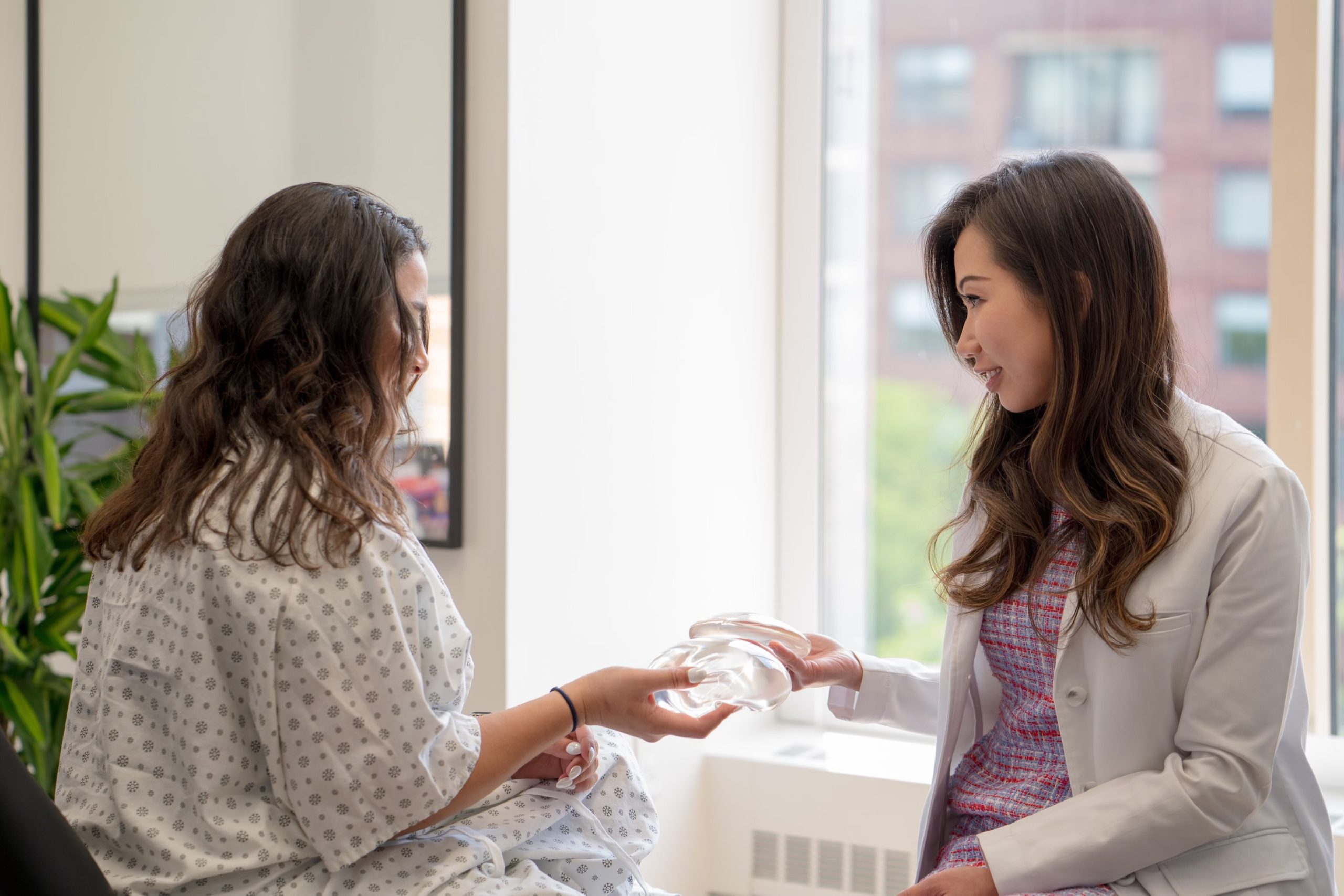Breast augmentation goes by many different names, from the colloquial “boob job” or “breast aug” to the more technical “augmentation mammoplasty.” All these terms refer to making the breasts larger by adding an implant, fat, or both to the breasts, with the end goal of enlarging them or making them more symmetric.

One size doesn’t fit all
Choosing the right implant size is a very personal decision. One important consideration is your breast’s base width, or how wide your natural breast is from side to side. Choosing an implant that is too wide may look top heavy, or it may feel uncomfortable when putting your arms down because they hit the side of the implant. During the consultation, I have patients try on different implants for size and feel. I also have women use the Rice Test at home to confirm the size in the comfort of their own homes. Of course, patients are welcome to see me as many times as needed before surgery to choose the perfect pair.
Silicone versus saline versus fat
The biggest distinction between implants is silicone versus saline. Silicone implants are filled with gel, which is softer and has less rippling. These implants are FDA approved for women 22 years and older. Saline implants are filled with sterile salt water, and are FDA approved for women 18 years and older. Saline implants can be placed using a slightly smaller incision, and implant rupture is more obvious. The downside of saline implants is that they may not feel as natural as silicone.
You can also use your own fat if you do not want an implant, and if you only want a small to moderate enhancement in size and are overall happy with your natural breast shape. I usually overfill the breasts with fat during surgery, since you’re expected to lose about 40% of the added fat volume over time.
Dr. Cassie Nghiem’s approach
My personal preference is a natural, elegant look. Gone are the days of over-exaggerated Baywatch breasts, ushering in the era of feminine curves that effortlessly compliment your body. For thinner patients with less natural breast tissue, I prefer to place the implant underneath the muscle for a smoother transition between the natural breasts and the implant. This avoids the “stuck on” look, whereby the implants look like unidentified foreign objects stuck onto the chest. For highly athletic patients like body builders, I prefer placing the implant above the muscle to avoid an animation deformity, or a noticeable contraction of the implant and overlying tissue when flexing the pectoralis muscle. Silicone smooth gel implants are my go-to for the softest, most natural breasts. If the breasts are far apart, I like to add fat over the implant to enhance the cleavage. This entails taking fat from an unwanted area, like your abdomen or thighs, and grafting it to the cleavage – a win-win!

